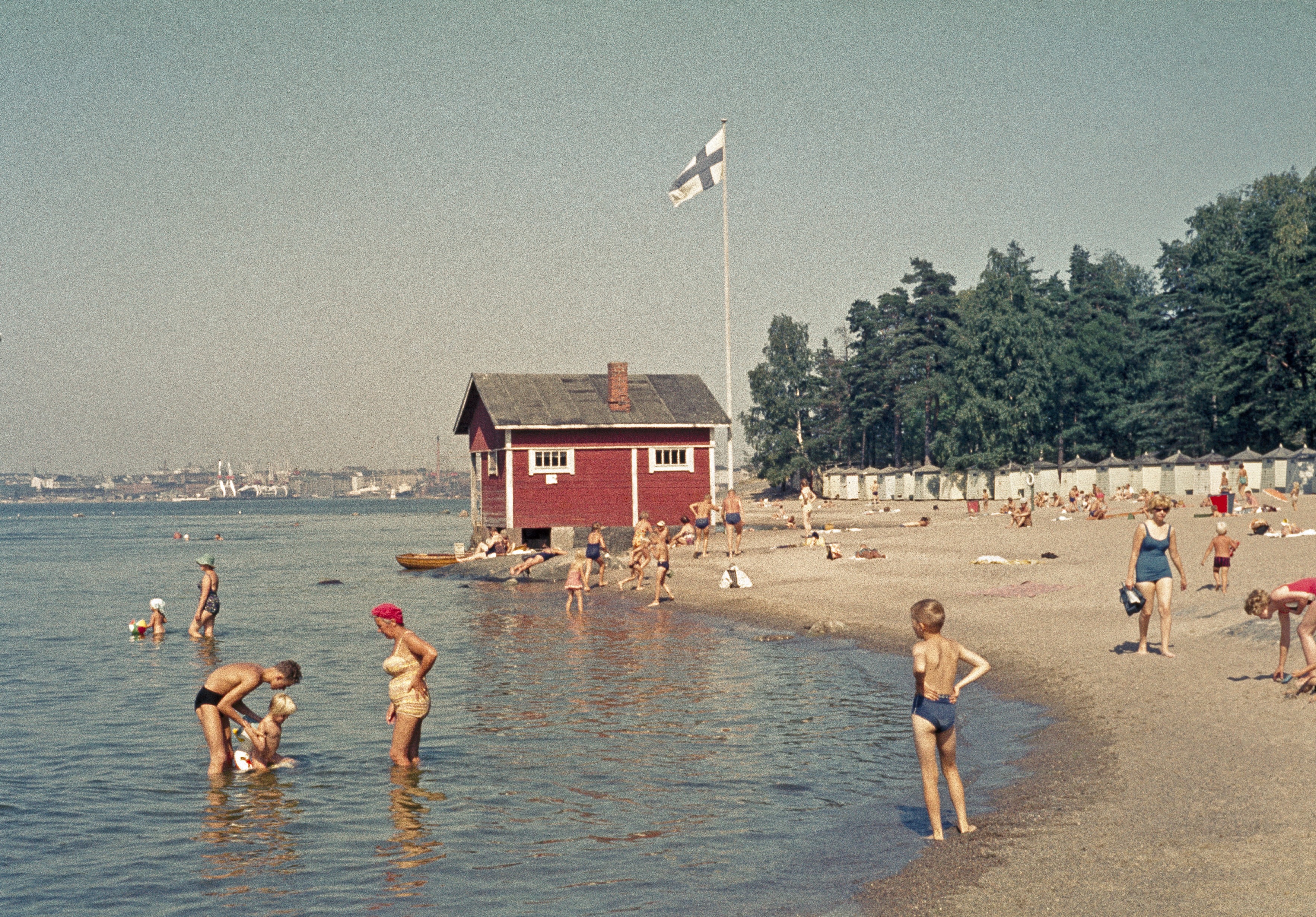From the 1840s onward, the fishermen’s hut was used by sea captain A.F.J. Brenner (1813–1870). Brenner also hunted birds on the nearby islands together with painter and ornithologist Magnus von Wright.
After Brenner’s death, the City of Helsinki rented out the western Pihlajasaari island for use as villa plots. One of the villas built around this time was Villa Hällebo, completed in 1883, which nowadays houses the restaurant Pihlajasaari. After the leases ran out, the island was made into a folk park in 1929. Itäinen Pihlajasaari was added to the park in 1950.
The Pihlajasaari islands were fortified during the First World War, and the fortifications were also used in the Winter and Continuation Wars as part of Finland’s anti-aircraft defence system. The concrete structure bordering the current camping area is not part of these fortifications, however, but rather a remnant of the Nobel-Standard company’s large petrol tanks.
The photo at the top of the page depicts some female employees of Elanto on the spring ice on Ascension Day in 1956. Pihlajasaari used to house a summer villa for the office staff of Elanto.

Pihlajasaari, beach 1963, photo Helsinki City Museum, Constantin Grünberg.